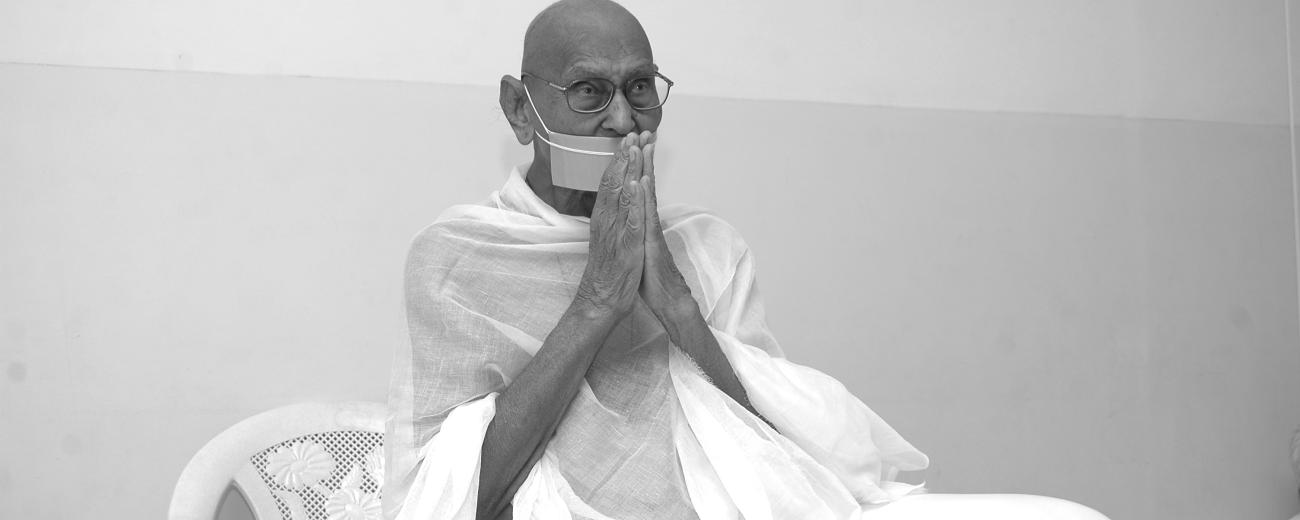
Ācārya Mahāprajña Memorial Lecture by Nalini Balbir

Key information
- Date
- Time
-
5:00 pm to 7:30 pm
- Venue
- SOAS, Main Building
- Room
- Brunei Gallery Lecture Theatre (BGLT)
- Event type
- Lecture
About this event
Nalini Balbir (Sorbonne-Nouvelle University and Ecole Pratique des Hautes Etudes) will be giving the Ācārya Mahāprajña Lecture, organised by the Centre of Jaina Studies.
This event is organised with the cooperation of Jain Vishva Bharati London. The event is held in concert with The 25th Annual Jaina Studies Workshop and the 23rd Annual Lecture in Jaina Studies. The lecture will be followed by a reception.
Lecture details
The Terāpanth's work on the Jain Āgamas
Focusing on the achievements of Ācārya Mahāprajña (1920-2010) in the area of Śvetāmbara Āgamas, this lecture will, more broadly, consider the work accomplished by other monks or nuns from the Terāpanth as well. Paratexts such as Āgam sampādan kī samasyāeṃ (1993) by Ācārya Mahāprajña himself, the 'Editorial' of Navasuttāṇi (2000), or Āgam sampādan kī yātrā by Muni Dulharāj (2011), one of the most active Terāpanthin monks in the area under investigation, will provide a basis for the exploration as they delineate problems and guidelines for the project of the Terāpanth Āgama critical edition going back to 1954 under the leadership of Ācārya Tulsī.
Then illustrations will be taken from the actual editions of individual works in which Ācārya Mahāprajña, first as Muni Nathmal, played a prominent role. Beside the Aṅgasuttāṇi and other volumes, the Acharanga Bhasyam (first ed. 2001), which contains a detailed English commentary of the first Aṅga in all its complexities, will be examined more closely.
On the other hand, the lecture will try to show how strong and diverse the presence of the Āgamas is in Terāpanthin scholarship: (1) editions and/or Hindi translations of Prakrit exegetical literature (e.g., the bhāṣyas or niryuktis); (2) elaborations of tools in the form of word-indexes (e.g., Āgamaśabdakośa) or of special dictionaries gleaning material from the Āgamas (e.g., dictionary of etymologies and synonyms, dictionaries of plants, animals and musical instruments); (3) renderings in vernacular languages, namely Rajasthani, using vernacular literary forms in order to make the Āgamas accessible to local audiences who do not necessarily read Prakrit or Sanskrit. This was the undertaking of Jayācārya (1803-1881) who composed nine joṛs on several Āgamas, among which the voluminous Bhagavatī Joṛ edited by Ācārya Mahāprajña holds an outstanding place.
It is significant that the Āgamic work achieved by the Terāpanth is multi-handed. Ācārya Tulsī's inspiration had an immense impact on Muni Nathmal/Āc. Mahāprajña. But it has also stimulated other members of the order, including a number of nuns and samaṇīs whose contributions to the field are fundamental.
Contact
- Heleen De Jonckheere (hd28@soas.ac.uk)
Support
You can support the activities of the Jaina Centre (including this event).


